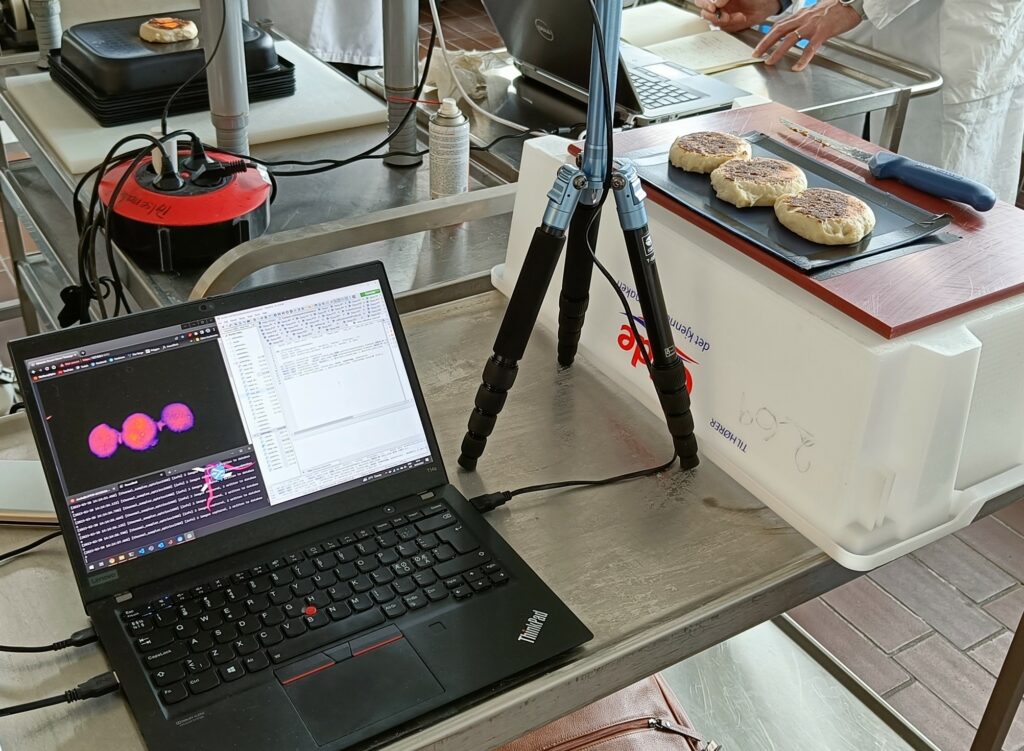
Article
Fish Cake AI
14 February 2024
How can AI and IR-cameras assist in assessing food quality? Through the DigiFoods centre, Idletechs works with different XAI-applications for monitoring the quality of different food products, including the production of fish cakes!
IR-cameras can provide high-resolution measurements of the surface of objects such as fish-cakes, but since the variation in fish cakes is large and the surface measurements are not related 1-1 to the core temperature, this data is not necessarily well-suited for quality monitoring. However, combining it with AI and ML methods we can construct reference conditions for good and bad fish-cakes to enable automated quality analysis. Do we care if the AI methods are explainable? Yes, because we need to understand and monitor when we are inside a known measurement situation, and if the uncertainty of our assessments is too large.

The DigiFoods consortium has the goal of developing smart, sensor-driven solutions for process optimization and digitalization in the food industry. An integrated activity of the project is to provide information about food quality with suitable multichannel sensors. The typical instruments are spectroscopy based with the ability to provide fingerprints of the biological properties of the samples, often in real-time. Another aspect of food quality is food safety.
Applications related to thermal measurements of individual food products fall nicely within the project activities for Idletechs as the company has a long experience with thermal imaging. One pilot study on thermal monitoring of fish cakes was conducted last year in a controlled laboratory environment. Freshly produced fish cakes were measured both with near-infrared spectroscopy and thermal imaging. Where the spectrometer provides one measurement per physical sample, the thermal camera gives a thermal image, acting in principle as 300 000 thermometers. This allows visual representation of the spatial distribution of the surface temperature. Furthermore, as the thermal camera has an acquisition rate of five images per second, the cooling of the samples can also be monitored in real-time.
Thus, we have combination of spatial and temporal data that forms our basis for generating good and bad reference conditions for our fish cakes. These reference conditions can be aware of contextual information and environment conditions that affect the measurements. By combining this with anomaly detection, statistical process control, and other monitoring techniques, we can quickly detect out-of-spec situations. One might easily foresee industrial applications for quality control of various products directly at the production line with feedback control to tune the process parameters for optimal production.